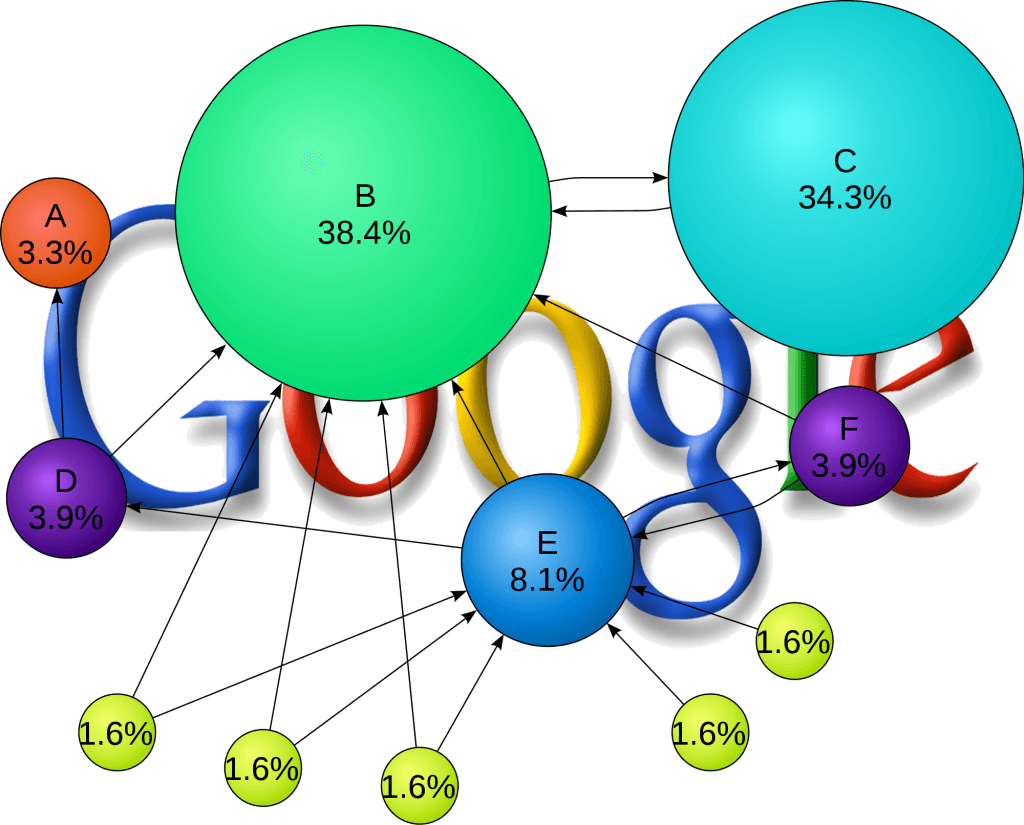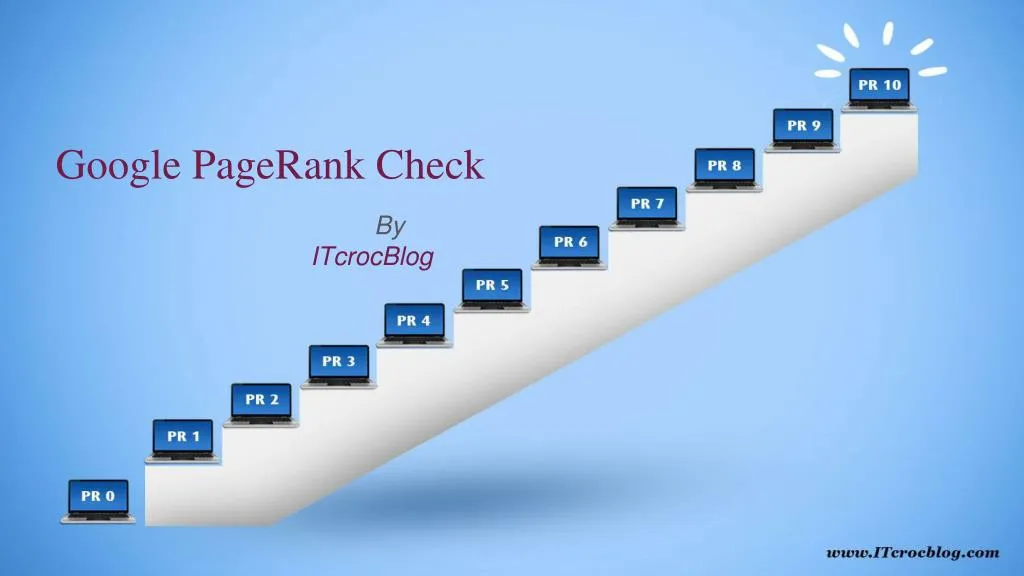Understanding Google Check PageRank: A Comprehensive Guide
Detail Author:
- Name : Linnie Homenick
- Username : bergnaum.addison
- Email : eloise25@yahoo.com
- Birthdate : 1973-10-12
- Address : 696 Pacocha Curve North Melissa, RI 32890
- Phone : 585.263.3397
- Company : Kirlin LLC
- Job : Police and Sheriffs Patrol Officer
- Bio : Est et nisi cum. Vel libero eveniet dolor inventore error. Quis fugiat sunt occaecati quibusdam nisi. Accusantium eaque ea autem quis. Eveniet est recusandae voluptas et.
Socials
twitter:
- url : https://twitter.com/schumm1984
- username : schumm1984
- bio : Sit et qui sed. Sunt mollitia et similique sed. Molestiae ut quis et ipsa nulla. Commodi autem dicta ipsa nihil doloribus aspernatur.
- followers : 6301
- following : 1308
tiktok:
- url : https://tiktok.com/@silas_dev
- username : silas_dev
- bio : Ipsum unde amet cupiditate optio.
- followers : 4490
- following : 2420
In the world of digital marketing and SEO, understanding how to measure the effectiveness of your website is crucial. One of the key metrics that was once a cornerstone of SEO strategies is PageRank. Google Check PageRank allows webmasters and marketers to assess how well their site ranks in Google’s search engine results. This article will explore what PageRank is, how it works, and the tools available to check it.
Since the inception of Google, PageRank has played a significant role in determining the ranking of websites. It is an algorithm created by Larry Page and Sergey Brin, the founders of Google, to rank web pages in search engine results. Although the importance of PageRank has evolved over time, it remains a topic of interest for webmasters seeking to improve their site’s visibility online.
In this guide, we will delve into the intricacies of PageRank, the significance of checking it, and the resources available for webmasters. By understanding PageRank and utilizing Google Check PageRank tools effectively, you can enhance your SEO strategies and ultimately drive more traffic to your website.
Table of Contents
- What is PageRank?
- History of PageRank
- How PageRank Works
- Importance of PageRank in SEO
- Tools to Check PageRank
- Limitations of PageRank
- The Future of PageRank
- Conclusion
What is PageRank?
PageRank is a system for ranking web pages developed by Google. It is based on the concept that the importance of a page can be judged by the number and quality of links pointing to it. The higher the PageRank, the more authoritative the page is considered in the eyes of search engines.
Key Concepts of PageRank
- Link Analysis: PageRank evaluates the quantity and quality of incoming links to determine a page's importance.
- Voting System: Each link from one page to another is considered a vote of confidence, contributing to the overall ranking of the page being linked to.
- Decay Factor: PageRank includes a decay factor, which reduces the value of links over time, reflecting the dynamic nature of the web.
History of PageRank
PageRank was introduced in 1996 as part of Larry Page and Sergey Brin's research project at Stanford University. The algorithm was designed to provide a more efficient way of ranking web pages compared to existing methods, which mainly relied on keyword density and other less effective criteria.
Over the years, PageRank became synonymous with Google's search engine capabilities and was a significant factor in the company’s meteoric rise in the tech industry. However, as search engine algorithms evolved, PageRank became just one of many factors in determining search rankings.
How PageRank Works
The PageRank algorithm assigns a numerical value to each web page based on its link structure. This value is used to rank pages in search results. Here’s a simplified breakdown of how it works:
1. Link Structure Analysis
Google analyzes the link structure of the web to establish a network of relationships between pages. Each link is viewed as a vote, and the more votes a page receives, the higher its PageRank.
2. Damping Factor
The damping factor, typically set around 0.85, accounts for the likelihood that a user will stop clicking on links before reaching the end of the web. This factor ensures that PageRank values remain finite and helps to balance the ranking system.
3. Iterative Calculation
PageRank values are calculated iteratively. The algorithm starts with an initial PageRank estimate and continues to adjust the values based on the link structure until they converge on stable values.
Importance of PageRank in SEO
While PageRank is no longer the sole determinant of search engine rankings, it still holds importance in SEO for several reasons:
- Link Building: Understanding PageRank helps in developing effective link-building strategies, as acquiring high-quality backlinks can significantly impact your site’s authority.
- Content Strategy: Pages with higher PageRank are often seen as more credible, guiding content creation that can attract valuable links.
- Competitive Analysis: Analyzing competitors' PageRank can provide insights into their SEO strategies and link profiles.
Tools to Check PageRank
There are several tools available that allow webmasters to check their PageRank easily. Here are some popular options:
- Google Toolbar: An older tool that provided PageRank information directly within the browser, but its functionality has diminished.
- SEOquake: A browser extension that offers a range of SEO metrics, including PageRank.
- RankChecker: A standalone application that allows users to check the PageRank of multiple URLs simultaneously.
- Ahrefs: A comprehensive SEO tool that provides insights into backlinks and domain authority, indirectly reflecting PageRank.
Limitations of PageRank
Despite its historical significance, PageRank has limitations that webmasters should be aware of:
- Not Updated Frequently: Google does not update PageRank values as often as it once did, leading to outdated information.
- Over-Simplification: PageRank does not account for other important ranking factors like content quality, user experience, and engagement metrics.
- Misleading Metric: Relying solely on PageRank can lead to misguided strategies, as it does not provide a complete picture of SEO performance.
The Future of PageRank
As Google continues to refine its algorithms, the role of PageRank may become less prominent. However, understanding the principles behind PageRank can still provide valuable insights into link building and content strategy. The future of SEO will likely focus more on user experience, content relevance, and engagement metrics rather than solely on link structures.
Conclusion
In summary, Google Check PageRank remains a relevant concept in the realm of SEO, despite its diminished role in search engine ranking algorithms. By understanding what PageRank is, how it works, and the tools available to check it, webmasters can enhance their SEO strategies and improve their site's visibility. Don’t hesitate to explore these tools and incorporate their insights into your digital marketing efforts.
If you found this article helpful, please leave a comment below or share it with your network. For more insights on SEO and digital marketing, be sure to check out our other articles!
Thank you for reading, and we hope to see you back here soon for more valuable information!

